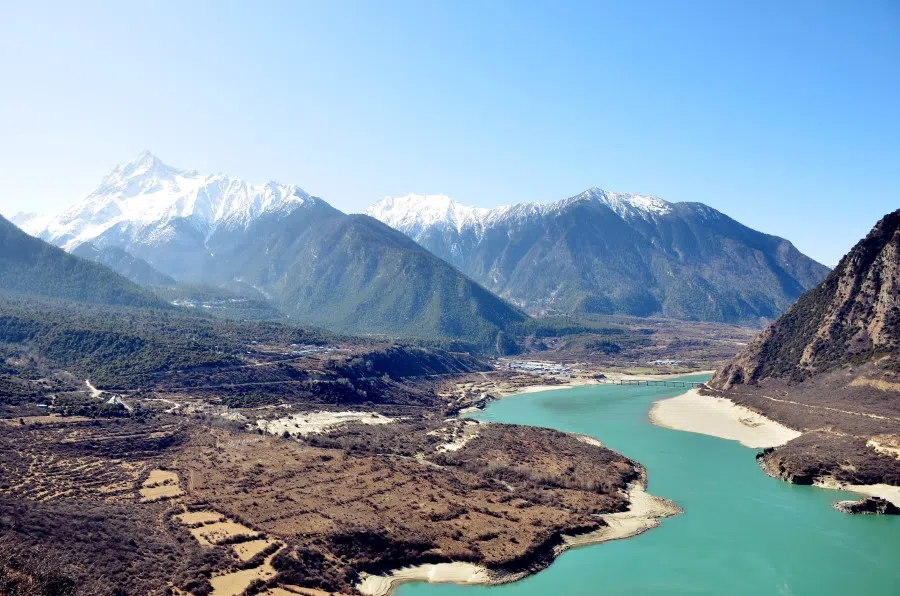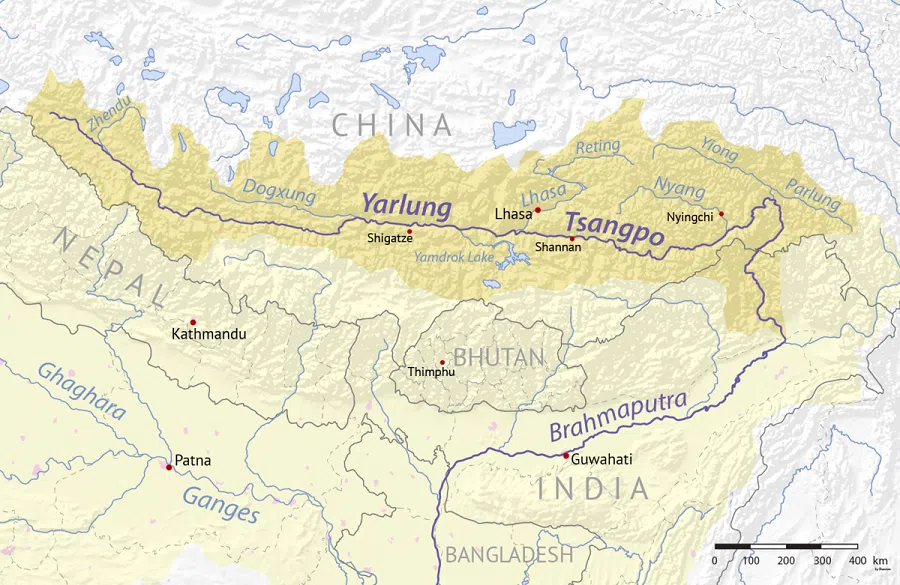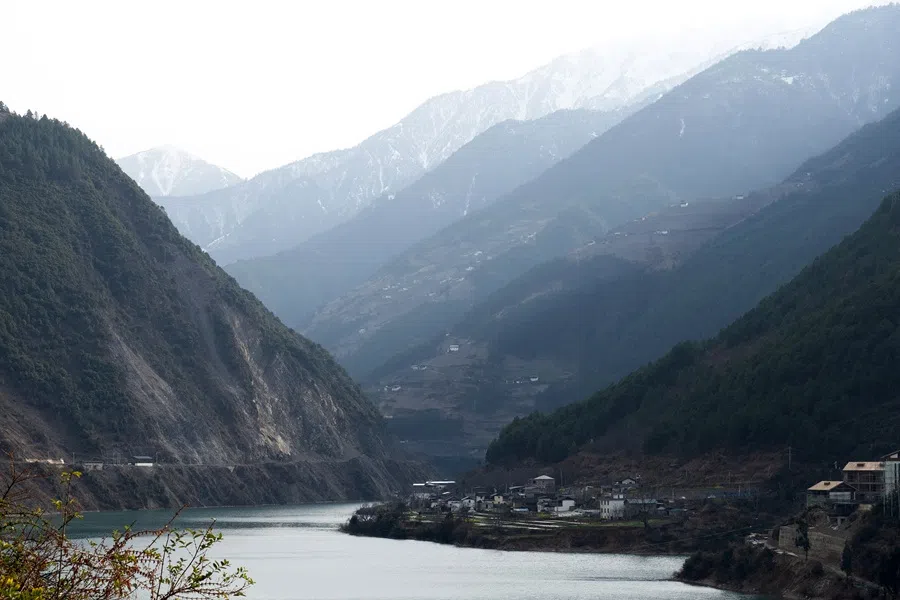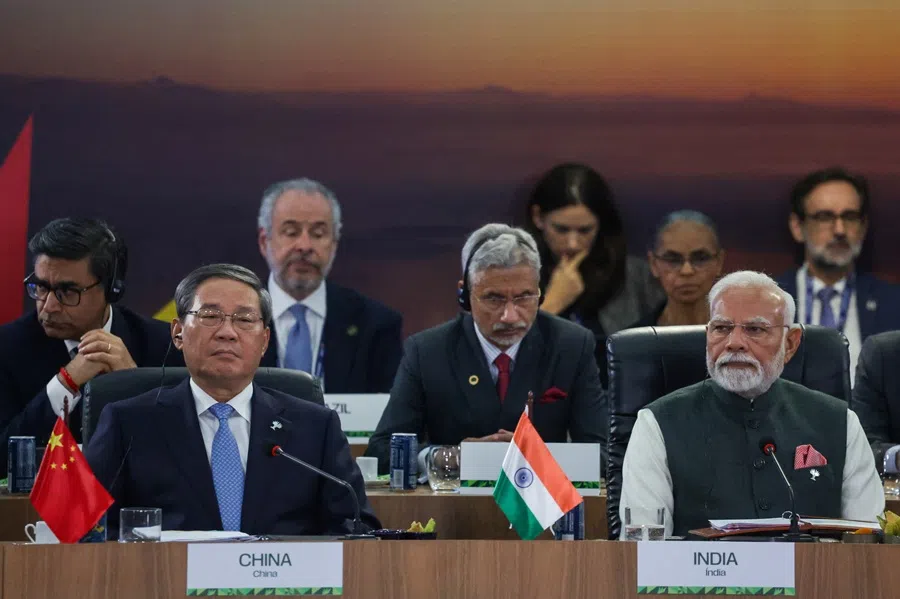The Tibet mega-dam: Powering AI, reshaping South Asia
China’s Tibet mega-dam project (the Yarlung Zangbo mega-dam project) is more than a hydropower play — it is a strategic bid to green-power AI, secure energy dominance and reshape South Asia’s fragile geopolitical balance, says academic Hao Nan.

Over the past year, international media have sounded alarm bells over China’s Yarlung Zangbo mega-dam project — an ambitious 1.2 trillion RMB hydropower infrastructure plan on the Yarlung Zangbo (Brahmaputra) River in Tibet. Coverage from New Delhi to Washington warns that the project represents a new phase of Beijing’s “water weaponisation” strategy to pressure India by altering river flows downstream.
But such narratives obscure a more complex and potentially hopeful reality. Far from being a hydro-strategic trap, the mega-dam project may actually create shared economic benefits and open the door to a new model of subregional cooperation. If anything, its most profound impact on India could be indirect: a structural shift in regional dynamics that nudges New Delhi towards pragmatism in its China policy.
Contrary to portrayals of weaponised hydrology, the mega-dam project aligns with China’s domestic economic goals and long-term energy transition. At the same time, it holds promise for transforming Tibet into a regional development hub. With the right transboundary governance frameworks in place, its benefits could spill over to India, Nepal, Bhutan and Bangladesh.
Moreover, as China launches new development initiatives across South Asia — from the China-Pakistan-Afghanistan trilateral meeting to the China-Pakistan-Bangladesh trilateral meeting, along with closer and upgraded relationships with Maldives and Sri Lanka — the mega-dam project fits within a broader diplomatic strategy to normalise and perhaps structuralise China’s presence in the South Asia region. This emerging structure may compel India, now geopolitically strained, to recalibrate its approach towards the long-stalled South Asia regional cooperation and China.
Beyond economic boost
Domestically, the mega-dam project offers a critical stimulus for China’s slowing economy, but not in traditional terms. Even though China is currently facing the pressing challenge of an economic slowdown at home, the sheer scale of its economy today and the complexity of its government debt issues make it unlikely for China to launch large-scale infrastructure projects like the Yarlung Zangbo mega-dam project solely for the purpose of boosting its economy, as it may have done in the past.
In 2024, China’s broad infrastructure investment totalled approximately 14.1 trillion RMB. The mega-dam project is expected to have a construction period of about ten years, with an annual investment of around 120 billion RMB. This represents only around 0.85% of the total infrastructure investment in 2024. On average, it is expected to drive an annual increase of only about 0.8% in infrastructure investment.
By exploiting the hydropower potentials of the Yarlung Zangbo mega-dam project, it could green-power AI data centres in Southwest China and hardware manufacturing zones in the Pearl River Delta.

Furthermore, the mega-dam project may contribute less than 0.09% to GDP in a single year. Over the long term, a total investment of RMB 1.2 trillion is projected to generate an additional RMB 2.04 trillion in GDP over ten years, with an average annual contribution of around 0.15%.
AI’s new energy source
The real stimulus perhaps lies in the project’s potential in driving China’s race for artificial intelligence (AI). AI demands immense computing power and, consequently, enormous electricity consumption. As the US pivots towards nuclear energy to meet its AI needs, China is diversifying via renewables.
The project is expected to have an installed capacity of approximately 60 million kilowatts, capable of generating nearly 300 billion kilowatt-hours (kWh) of clean, renewable and zero-carbon electricity annually — enough to meet the yearly electricity needs of over 300 million people.
In 2025, China’s computing power infrastructure is expected to consume 360 billion kWh of electricity, while 5G base stations will consume around 140 billion kWh. This means that AI computing and 5G base stations alone will generate approximately 500 billion kWh of additional electricity demand in 2025, equivalent to the total projected electricity consumption of Sichuan province that year (486.5 billion kWh).
By exploiting the hydropower potentials of the Yarlung Zangbo mega-dam project, it could green-power AI data centres in Southwest China and hardware manufacturing zones in the Pearl River Delta. Unlike carbon-heavy coal or vulnerable oil imports, this is cheap, clean and secure energy. In the intensifying US-China AI contest, energy is a hidden but decisive front — and this project can be the secret weapon.
The rationale also goes beyond pure techno-economic purposes. While China has committed to carbon peaking by 2030 and carbon neutrality by 2060, recent geopolitical turbulence, economic security threats and extreme weather are slowing down China’s efforts in reducing carbon intensity — an indicator measuring carbon emissions per unit of GDP. Its carbon intensity declined by 3.4% in 2024, falling short of the official target of 3.9%.
Bringing prosperity to frontier cities
Strategically, the mega-dam project also strengthens China’s policy to “prosper the border and enrich the people”. Just as the Belt and Road Initiative helped revitalise frontier cities like Kashgar in Xinjiang, this project is expected to do the same for places like Linzhi (Nyingchi) city and Motuo (Mêdog) county in Tibet. These once-isolated regions could soon become dynamic urban nodes, fuelled by power generation, tax revenue and employment.
This means the water flow from China accounts for only about 6.3% of the total flow within Indian territory.

Prosperity in these regions will not only enhance border patrol efficiency but also project a benign image to neighbouring countries. This “demonstration effect” — of improved livelihoods and infrastructure — has already influenced Central Asia; Tibet could now play a similar role for South Asia.
Reasons for concern
Still, concerns about transboundary environmental impacts are not unfounded, but not in the way often portrayed by the media. According to an Indian scholar’s analysis, the Brahmaputra River within Indian territory is primarily fed by numerous tributaries originating within India itself, while the upstream contribution from the Yarlung Zangbo in China accounts for only a small portion of the overall flow. As a result, the hydrological infrastructure built within China has no substantial impact on downstream countries such as India and Bangladesh.
For instance, data from the Nuxia hydrological station in China (located approximately 289 km downstream of the Zangmu Hydropower Station) show an annual runoff volume of just 31.2 billion cubic metres. In contrast, the Pandu/Guwahati hydrological station in India records an annual runoff of 494 billion cubic metres. This means the water flow from China accounts for only about 6.3% of the total flow within Indian territory. Assam’s Chief Minister Himanta Biswa Sarma also stated that there is currently no reason for urgent concern, as the majority of the Brahmaputra’s water originates from Bhutan and Arunachal Pradesh.
A Mekong-style framework would not only enhance environmental transparency but also promote subregional economic integration.
Foundation for regional economic integration?
Instead, the Yarlung Zangbo mega-dam project might open a unique window for subregional cooperation. Drawing from the Lancang-Mekong model, where China and downstream states have built basin-wide governance and development mechanisms, the same can be envisioned for the Yarlung Zangbo.

Pioneering institutions such as the Yarlung Zangbo–Brahmaputra Basin Network, established under the International Centre for Integrated Mountain Development’s guidance, already bring together technical actors from China, India, Bhutan and Bangladesh. The project’s prominence could now provide the momentum to formalise this cooperation into a full-fledged governance mechanism with shared data, joint monitoring and economic benefit-sharing.
A Mekong-style framework would not only enhance environmental transparency but also promote subregional economic integration. Hydropower-generated electricity could be exported to neighbouring countries, supporting electrification and industrial growth. Infrastructure corridors — roads, bridges, grids — could knit together border regions long marginalised by central governments. A joint investment platform, modelled on the Lancang–Mekong Cooperation’s special fund, could channel resources into sustainable development projects. Such an approach would shift the regional conversation from zero-sum hydro-politics to positive-sum regionalism.
China as regional stakeholder
Indeed, China seems to be moving in that direction already. Beyond the Yarlung Zangbo mega-dam project, Beijing is advancing trilateral platforms across South Asia. The newly established China–Pakistan–Bangladesh meeting, and the earlier one involving Pakistan and Afghanistan, are reshaping regional alignments.
These initiatives bypass the long-stalled South Asian Association for Regional Cooperation’s gridlock and create targeted mechanisms for infrastructure, trade and climate cooperation. They also reinforce China’s presence in India’s traditional backyard — from the Himalayan foothills to the Indian Ocean.
For countries like Bangladesh, these platforms offer an alternative to overdependence on India. For China, they represent a long-term strategy to entrench its role as a regional stakeholder.
If managed wisely, it could become a shared asset for the entire Yarlung Zangbo basin. And if India chooses diplomacy over suspicion, it could mark the beginning of a less confrontational era in South Asia.

This shifting landscape poses a strategic dilemma for India. Domestically, the Modi government faces mounting challenges — economic discontent, political opposition and reputational setbacks from recent escalations with Pakistan. Internationally, New Delhi’s relations with the US, Russia and the EU are under strain.
At a time of diplomatic vulnerability, an increasingly isolated India must weigh whether to resist or adapt to China’s regional architecture. Joining or at least engaging with these new initiatives could signal pragmatism and reduce tensions. Refusing may deepen India’s isolation and harden the region’s strategic fault lines.
Ultimately, the Yarlung Zangbo mega-dam project should not be viewed narrowly as a geopolitical gambit. It is a multifaceted endeavour — an economic catalyst, a renewable energy breakthrough, a security doctrine in action, and a potential foundation for regional integration.
If managed wisely, it could become a shared asset for the entire Yarlung Zangbo basin. And if India chooses diplomacy over suspicion, it could mark the beginning of a less confrontational era in South Asia. In an age of multipolar uncertainty, such shifts in mindset are not just possible — they are urgently necessary.





